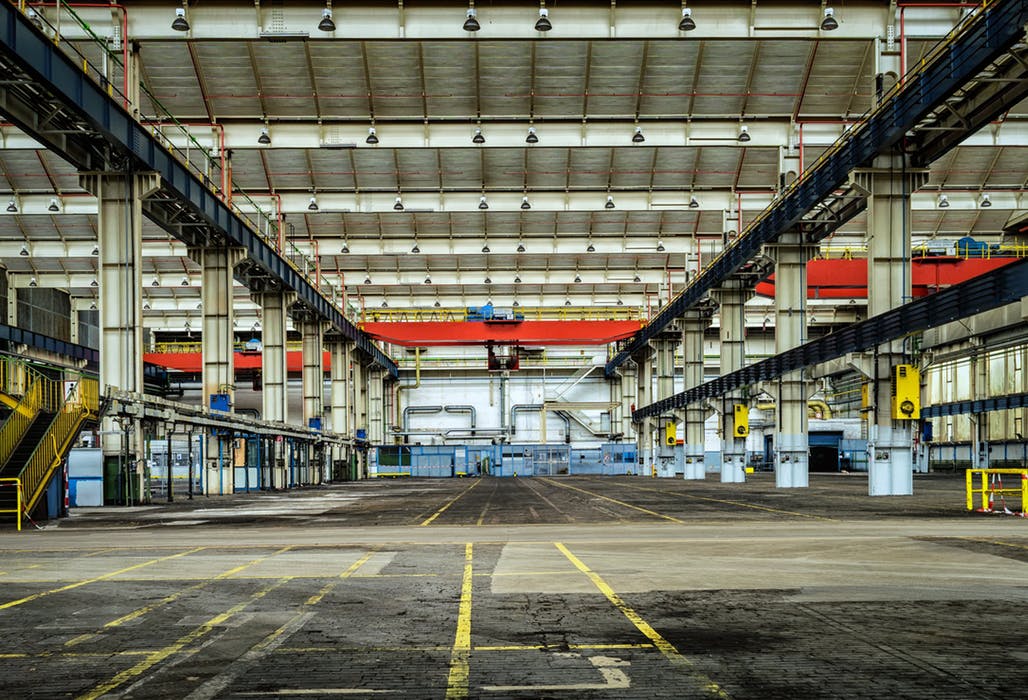
Amazon. Target. Nike. These big-name brands all have significant name recognition and a massive audience of loyal customers. There’s another thing they have in common — they are retailers turned e-tailers that have been leaders in the transition from the traditional brick-and-mortar shopping experience to the custom, tailored world of online transactions.
Supporting this revolution has required these major companies, and others like them, to build huge distributions centers at key locations around the United States.
How huge is huge, exactly? Amazon and other big retailers regularly build warehouses topping one million square feet, a size that would have been unheard of less than a decade ago.
There’s no sign this trend is slowing down anytime soon — the Urban Land Institute’s Emerging Trends Report for 2018 listed fulfillment centers and warehouses as their top two picks for sectors with investment potential.
Online shopping isn’t going anywhere; in fact, it’s likely that major retailers will do even more in years to come to make the process faster, easier and even more convenient, and thus require ever-more storage and distribution near major metro areas.
But what do large distribution centers mean for employee safety and exposure concerns? With more than 145,000 people working in over 7,000 facilities, the fatal injury rate for the warehousing industry is higher than the national average for all industries.
With increased size comes a higher volume of opportunities for problems to happen — more chemicals and substances, more heavy machinery, greater potential for chaos. To help you understand these types of manufacturing liability, we’ve identified four exposure concerns you need to be aware of in large distribution centers.
- Improper chemical storage
Large warehouses use tens of thousands of chemicals every day. Unfortunately, they’re not always properly stored, handled or labeled. Workers suffer more than 190,000 illnesses and 50,000 deaths related to chemical exposures annually.
Workplace chemical exposures are known to cause cancers and other lung, kidney, skin, heart, stomach, brain, nerve and reproductive disease. On-site storage and usage of hazardous materials can result in soil or groundwater contamination if a warehouse improperly stores or disposes of them. Similarly, chemical burns are also possible if hazardous materials spill.
In order to educate employees on safe handling best practices, every large manufacturing center should maintain a Material Safety Data Sheet (MSDS) for each chemical and hold employees accountable for following the proper instructions. Managers should also train employees on proper storage techniques, how to clean up spills, and how to properly dispose of used materials. If not trained properly, managers can be held liable for injuries and a lawsuit might be pursued. If you have been injured in similar circumstances whilst at work, you can learn more about raising a claim for compensation by getting in contact with a reputable personal injury attorney.
- Forklift punctures According to OSHA, about 100 employees are killed and 95,000 injured every year due to forklift-related incidents.
Common dangers include speeding and slipping, crushing or hitting pedestrians, unstable, overloaded machines and operating in a poorly ventilated area.
Forklifts are certainly dangerous when misused, but they can also do severe damage if they accidentally puncture containers holding hazardous chemicals or other controlled substances.
While the first step in a spill response is to identify the spilled material, it’s not always as easy as reading a label. If a forklift damages a lower section of shelving, it could start a domino effect and cause higher sections to fall (resulting in even more damage and spillage).
How can distribution center managers minimize forklift puncture risks?
First, drivers should wear seatbelts and stay below 5 mph (or slower on slippery surfaces or congested areas). It’s also crucial that facilities maintain safe clearances in areas where forklifts operate — especially in taller warehouses.
It’s also incredibly important that all chemicals be adequately labeled so workers can identify spills to determine how to escape or clean an accident safely.
- Charging station fires Since large batteries power forklifts and other handling equipment, most warehouses use designated charging stations to efficiently swap depleted batteries for fully-charged ones. These batteries are powerful, though, and can vent gases, leak or even explode if mismanaged.
The electrolytes found in these batteries have large volumes of sulfuric acid, which can cause chemical burns on contact with skin. Additionally, during the charging process, batteries emit hydrogen gas that can cause flames or explosions if it is allowed to build to excessive levels. A battery can also short circuit if a worker improperly touches them — causing serious electrical burns and increasing risk of explosion.
That’s why it’s crucial that operators be trained in all battery changing procedures — such as positioning the forklift correctly and applying brakes. Facility managers should also make sure they’re providing proper personal protective equipment (like rubber gloves and eyewear) and locating a nearby fire extinguisher and eyewash station.
- Chemical transportation spills
Most manufacturing processes involve some sort of chemical transportation. Whether it’s a company bringing in raw materials or delivering their product, or a third party hired to dispose of waste, chemical transportation of any kind creates a wide range of exposures.
Hazardous materials traffic in the U.S. now exceeds 800,000 shipments per day and results in more than 3.1 billion tons of hazardous materials annually. In fact, crashes involving hazardous material shipments have a societal cost impact of slightly more than $1 billion a year.
A transportation situation that results in an environmental hazard is, for most businesses, uncommon. But every company needs to be prepared for such an event. A great way to minimize and prevent spills is to only use chemicals in experiments that you truly need for the desired results. The safety experts also recommend just transporting chemicals in and out that need to be used within a reasonable period of time and practicing great caution when transferring liquids from one container to another.
Know your exposure risks.
Whether you’re a manufacturing manager, line worker, custodian or anywhere in between, the best way to ensure your own safety and the safety of others is to follow clear safety guidelines. If you work for a distribution center or manufacturing facility that doesn’t have a clear set of exposure regulations, it’s time to start the conversation.





Leave a Comment